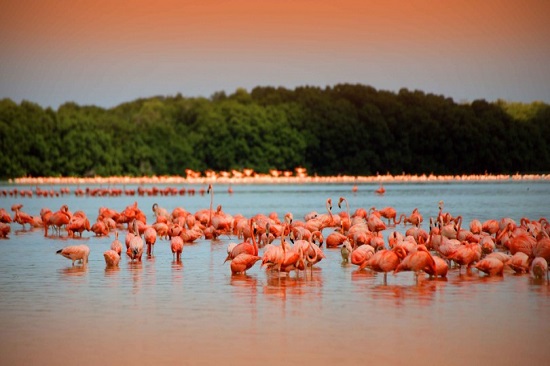Launched in 2006, the World Migratory Bird Day (WMBD) is an awareness campaign, coordinated by UN Enviroment, which is held annually and aims to inspire the conservation of migratory birds and their habitats.
Since 2002, the Pedro y Elena Hernández Foundation, A.C., works with other organizations and the federal government in the conservation of the flamingo.
In 2014 the foundation took the initiative, together with the academy and the National Commission of Natural Protected Areas (Conap), to learn more about the life cycle of Caribbean flamingos and thus carry out more effective conservation efforts.
Other agencies that collaborate in this initiative are the Secretariat of Urban Development and Environment of the State, the UNAM, the College of the Southern Border and the Cinvestav.
Research is being carried out to know exactly the patterns of migration of the flamingos throughout the year and to help protect the ecological integrity of their living spaces, looking for the future viability of the species.
Today, the Caribbean Flamingo Monitoring Program involves the Biosphere Reserves of Ría Celestún, Ría Lagartos, Los Petenes, Yum Balam Flora and Fauna Protection Area and El Palmar, Dzilam and Ciénegas State Reserves, as well as mangrove forests in the northern coast of Yucatan.
The mobility of flamingos within the Yucatan Peninsula has been documented in detail and it is sought to expand this knowledge through satellite technology. Specialists want to know exactly the movements of the species towards the great Caribbean, for which at the beginning of the year five monitoring systems were attached to adult flamingos.
Within the life cycle of flamingos, their habitats are vital, therefore, it is very important to protect their spaces of reproduction.
According to a statement, this year the federal authorities established restrictions on access to the nesting areas in the Ría Lagartos Reserve from April to August so if you want to visit this area, inform yourself before traveling.
Currently, flamingos can be seen in the wetlands throughout the peninsula this time of the year.
The best time to observe these birds in large concentrations is during the months of February and March in Ría Celestún Biosphere Reserve.
Source: yucatan.com.mx



